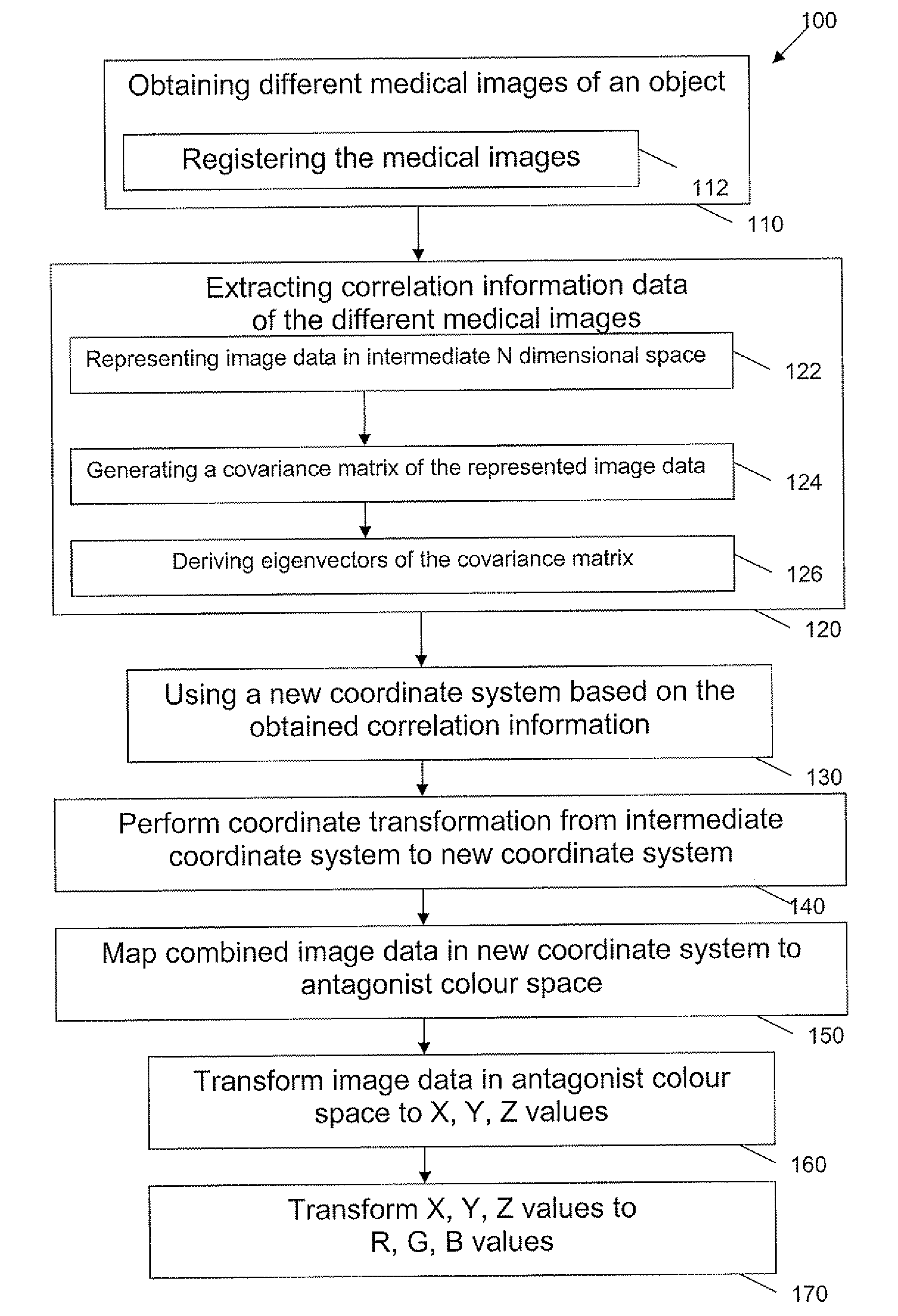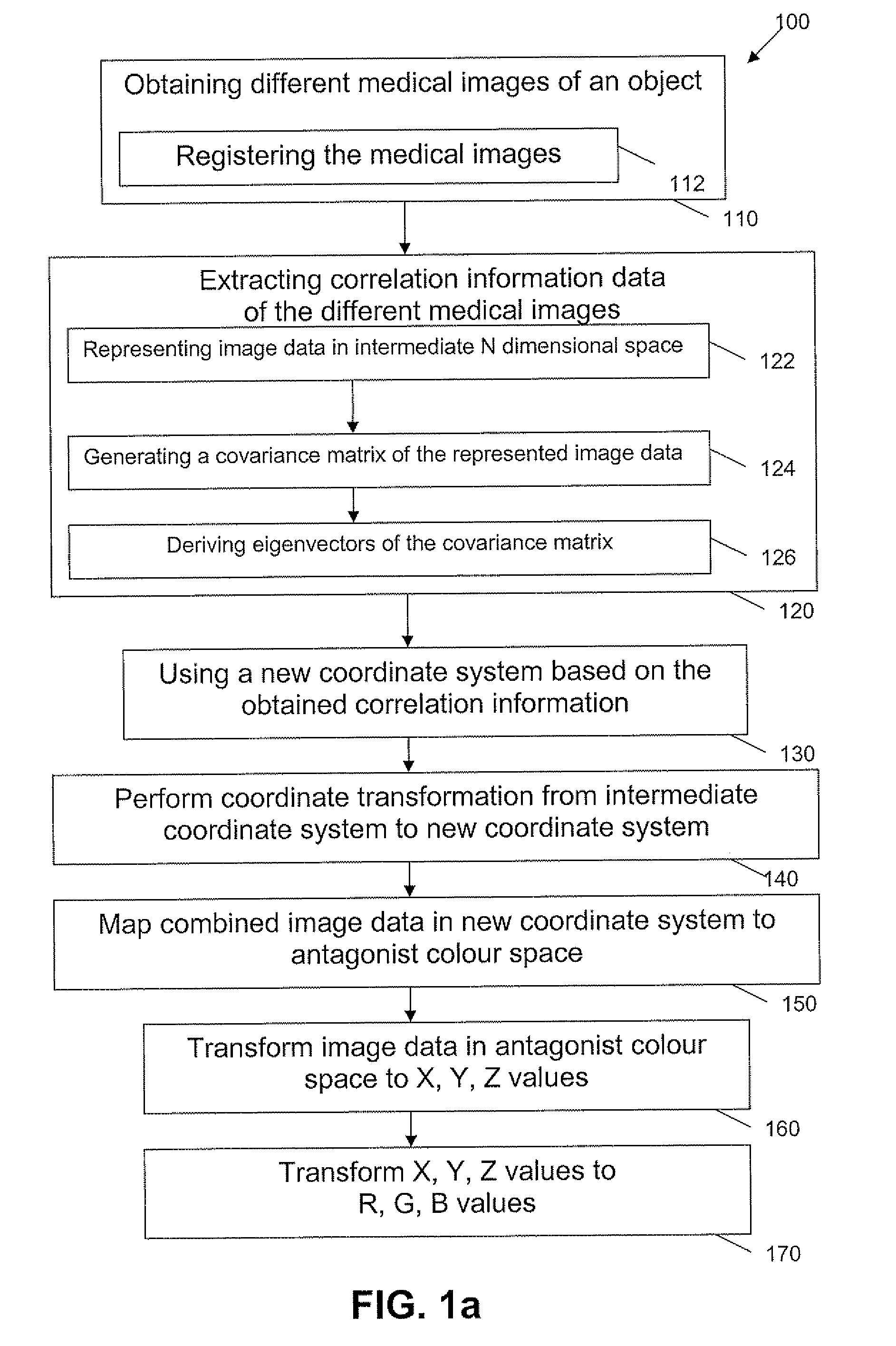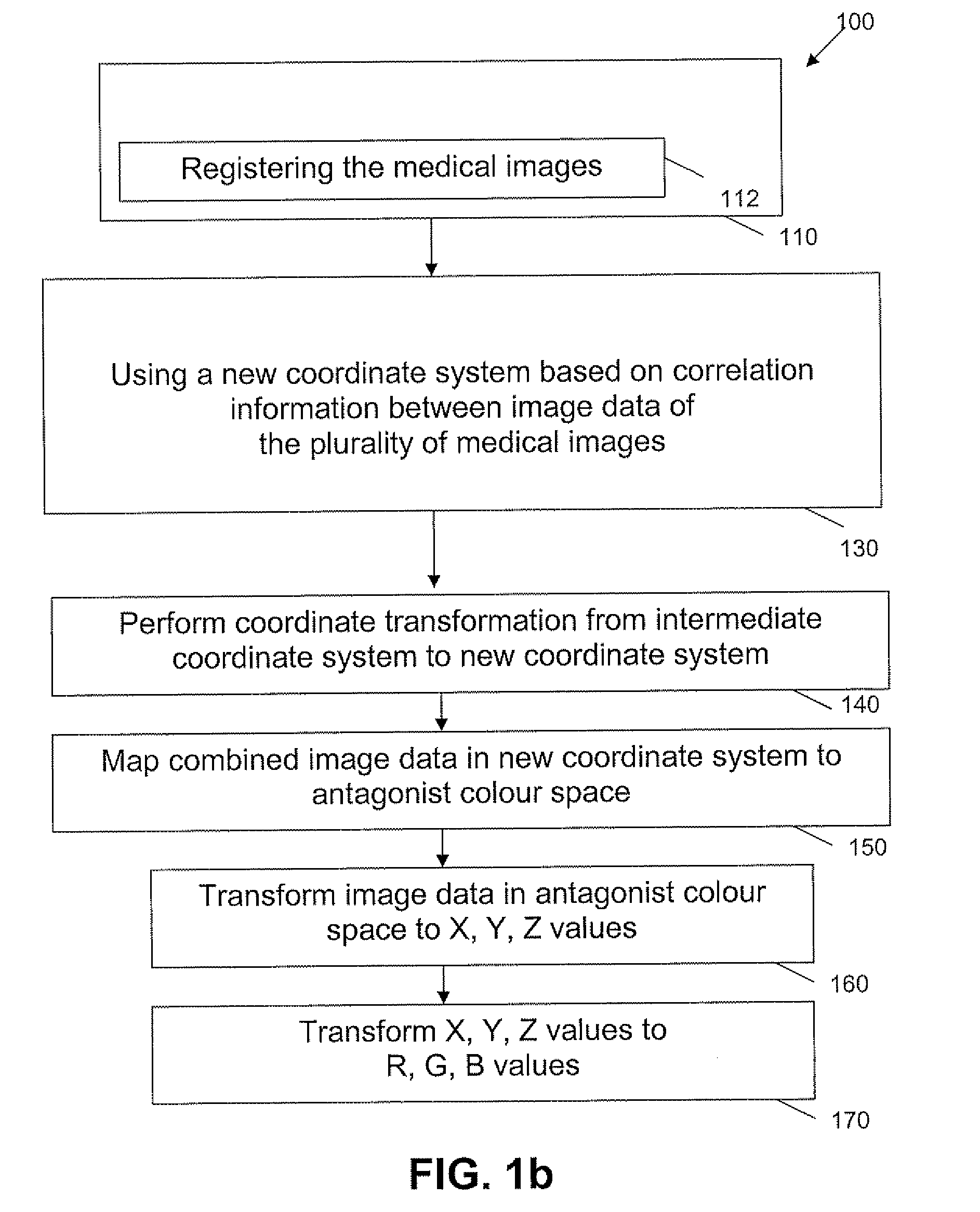Image processing of medical images
a medical image and image processing technology, applied in the field of medical imaging, can solve the problems of difficulty in seeing variations or differences, two images will lose resolution, and the fusion is not done yet for images, so as to achieve good contrast and improve contrast
- Summary
- Abstract
- Description
- Claims
- Application Information
AI Technical Summary
Benefits of technology
Problems solved by technology
Method used
Image
Examples
example 1
[0088]In a first example, fusion of a plurality of computed tomography images is described. In the present example the relation between the different images is time, i.e. images of the same object are taken at different moments in time. By way of example, a multiple phase CT-CT study is used to illustrate the possibilities of useful combining, i.e. fusing of images. In this example, a first CT scan is made without the use of contrast fluid, a second scan is taken whereby the patient was injected with contrast fluid, a third and fourth scan further show the fade out of the effect of the contrast fluid over time. The present example illustrates that contrast fluid may help the blood to absorb more of the X-ray radiation and in this way make the blood flow more visible in the CT image. Although two images are made under different circumstances and on different times, they remain highly correlated.
[0089]In the present example, the data analysis is performed using principal component ana...
example 2
[0095]A second example provides a more detailed illustration of the optional step of mapping information to an antagonist colour space. The present example illustrates the fusion of a CT image and a PET image. In this example, mapping to the antagonist colour space L*, a*, b* is described. The CT image thereby is mapped on the luminance axis L*, whereas the PET image uses both the red-green component axis, a*, and the yellow-blue axis, b*, to map its data points according to a certain colour map. The latter illustrates that for images that do not correlate significantly enough for performing principal component analysis, the images can be assigned to a specific channel in the antagonist colour space.
[0096]As in other imaging applications a level and width of the CT image can be controlled. For the PET image a blend function was used that controls the width and the level of the PET image and the level influences the luminance. Although it was mentioned above that PET is mapped on a* ...
example 3
[0104]A third example illustrates the example wherein there are multiple registered datasets that reflect an evolution over time, e.g. a three phase liver study and wherein a moving window technique is used. The new coordinate system thereby does not need to be based on PCA, but may be based thereon. In one example, the new coordinate system is based on visualisation of differences over time. For a three dimensional dataset DS(1), DS(2), DS(3), . . . a new coordinate system may be such that the new coordinate1 equals the original coordinate of the N'th dataset, the new coordinate2 equals the difference between the original coordinate1 of the N'th dataset and original coordinate1 of the N−1st dataset, new coordinate3 is an average of original coordinate of the Nth, the N−1st and N−2nd dataset minus the original coordinate of the N−3rd dataset. It is to be noticed that this technique also can be applied to a single dataset, e.g. a single CT dataset, whereby the “N medical images” are ...
PUM
 Login to View More
Login to View More Abstract
Description
Claims
Application Information
 Login to View More
Login to View More - R&D
- Intellectual Property
- Life Sciences
- Materials
- Tech Scout
- Unparalleled Data Quality
- Higher Quality Content
- 60% Fewer Hallucinations
Browse by: Latest US Patents, China's latest patents, Technical Efficacy Thesaurus, Application Domain, Technology Topic, Popular Technical Reports.
© 2025 PatSnap. All rights reserved.Legal|Privacy policy|Modern Slavery Act Transparency Statement|Sitemap|About US| Contact US: help@patsnap.com



